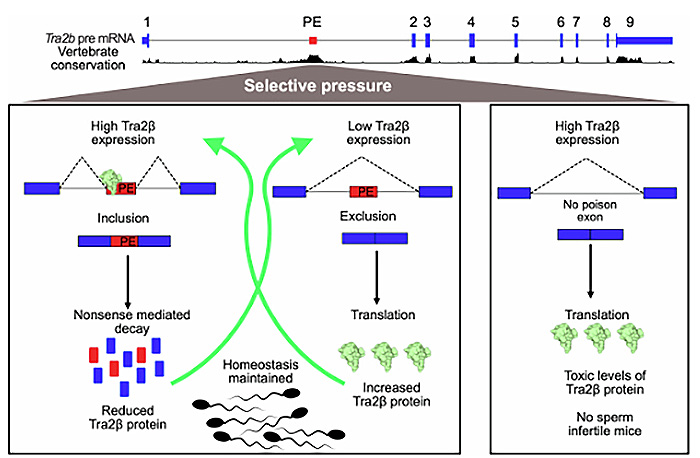Loss of a new gene has been found to cause progressive neurodegeneration in mice, specifically in the spinal cord and peripheral nervous system.
New movement disorder gene identified Loss of a new gene has been found to cause progressive neurodegeneration in mice, specifically in the spinal cord and peripheral nervous system. Image: muscle fibres (credit: Macroscopic Solutions) Abraham Acevedo-Arozena has led a study into mice that lack the gene Zfp106, which develop muscle wastage and the death of neurons in the spinal cord, leading to difficulties walking, curvature of the spine and a reduced lifespan in these mice. The findings from this research, published in the journal Human Molecular Genetics, suggest that these mice could be used for research into neurodegenerative diseases such as peripheral neuropathies (PN) and Amyotrophic Lateral Sclerosis (ALS). ALS, also known as Lou Gehrig’s disease, is the most common type of motor neuron disease – a fatal, progressive condition without cure, where patients lose the ability to move, speak and breathe. Awareness of motor neuron disease was recently raised in the UK by the ice-bucket challenge, a social media campaign that went viral. PN are a group of diseases affecting the nerves outside of the central nervous system. There are different forms of PN depending on the nerves affected. Collectively, they can lead to problems with movement, sensation or organ function. Similarities to ALS and PN The researchers found many similarities between the traits of Zfp106 deficient mice and the characteristic features of ALS and PN. Firstly, the mice only began to show signs of muscle loss when they are a few weeks old, with these gradually worsening as they got older. It was not that the neurons did not develop properly, but that they were fine when the mice were first born and later deteriorated over time. Secondly, only neurons extending from the spinal cord and peripheral nervous system were affected – those in the brain, for example, did not die – particularly affected were motor neurons, which convey the electrical messages that trigger the muscles to move. Lastly, there were similarities at the cellular level. A common feature of many neurodegenerative diseases, such as ALS and PN, is malfunctioning mitochondria, which provide energy for the cell. Some cell types, such as neurons, are more energy intensive, so are hit harder when the mitochondria can’t function properly. The researchers found signs the mitochondria were not working properly in the Zfp106 deficient mice, raising the possibility that this could be the root cause, and that Zfp106 has a role in ensuring mitochondria stay healthy. By identifying a new gene that may be involved in ALS, PN and other neurodegenerative diseases, this research has provided a new way to investigate how and why they develop.



